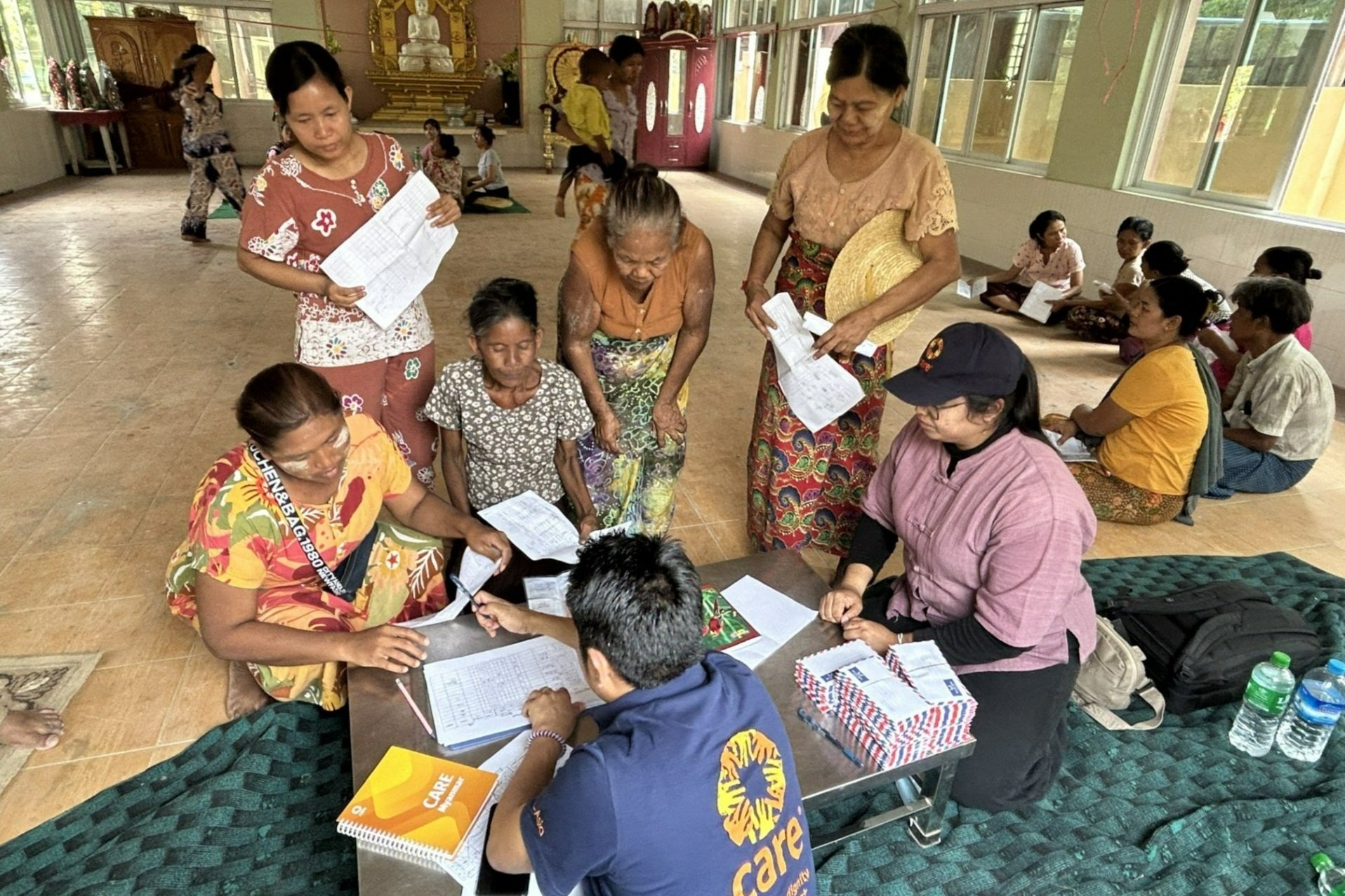When a quake meets conflict: on the ground in Myanmar
The Australian Humanitarian Partnership has been activated to respond to the aftermath of the 7.7 magnitude earthquake that struck Myanmar on 28 March 2025. All six lead AHP NGOs are working with local partners to meet immediate needs of those affected by the earthquake, and will continue to support recovery for the next 12 months with the support of the Australian Government, building on the pre-existing protracted crisis activation already taking place in Myanmar.
The ongoing civil war in Myanmar, which began in 2021 following a military coup, had already created a humanitarian crisis, with more than 18.6 million people estimated to be in need of assistance. The earthquake has now increased this demand: the UN estimates a further 2 million people now have critical assistance and protection needs due to the disaster.
Initial needs assessments by AHP partners demonstrated water, food, shelter, and protection were essential and urgent requirements: partners are already responding with multipurpose cash assistance and distribution of relief items to affected communities.
CARE Australia, one of the AHP agencies responding on the ground, shared stories from survivors, as told to their staff in Mandalay and Sagaing. While these communities are now receiving assistance, they still face a long road to safety, security and recovery.
The CARE team met Thiri — a mother of four in Mandalay. Her children are aged between four and eleven years old. She was working at a food stall when the earthquake struck and rushed home immediately.
"The children were huddling with their grandmother in the house. I had to run on the street when everything collapsed. There was no one to take care of them, so they had to run too.”
As a single mother, Thiri’s biggest worry was how to feed her children. “If I have to say what's in my heart, I think it's money. If I have money, I can take care of them. If I don't have money, I can't even buy them food if there's someone selling it. I can only watch others eat.” Photo: CARE Myanmar
A woman shows a fresh cut on her forehead - one of many injuries sustained during the earthquake. She survived, but a shattered mirror caused a deep wound. With no medical help nearby, she walked to the clinic and had to clean the injury herself. Photo: CARE Myanmar
A CARE distribution of aid supplies, including water and first aid kits, in Sagaing. Photo: CARE Myanmar
“Homes, schools, and hospitals have collapsed. Damaged roads and bridges are slowing the delivery of aid. Many families are sleeping in the open - on streets, sidewalks, and in parks - under intense summer heat. Fear remains high, as people are too afraid to return to their homes. We are working urgently to deliver cash assistance, clean water, food, shelter, mobile health clinics, and protection services to those who need it most,” said Arif Noor, CARE Myanmar Country Director.
“Right now, the biggest need is clean water,” one CARE local partner reported. “Children are getting sick with diarrhea because the water is so dirty.”
A CARE field staff member in Mandalay said that even ten days after the earthquake, people are living in fear and run out into the open when aftershocks occur.
“In Mandalay, many collapsed buildings are still just rubble on the ground. The city looks nothing like the place I used to know. We see people living in temporary camps and even beside the roads. It is the hot summer here and I cannot imagine how difficult for these people struggle with the heat in the makeshift tents in the open,” the staff member said.
“When we talked to women and girls, they told us that they stay in makeshift shelters with no wall or partition, and they have no privacy. Some told us that it is even difficult to change a sanitary pad.”
“Although the earthquake indiscriminately affects everyone, we have seen that women and girls, the elderly and people with disabilities are among the most affected,” they added.
“We are doing everything we can on the ground, around the clock, to provide assistance to the people when they need it most.”
CARE staff conduct a needs assessment on Inle Lake. Photo: CARE Myanmar
Women ride motorcycles along broken roads in Sagaing, often the only way to reach the nearest food and water supplies for their families. The roadside is lined with debris. Still, they consider themselves fortunate to have transport. Photo: CARE Myanmar
CARE staff distribute aid items to affected people in Mandalay. Photo: CARE Myanmar







